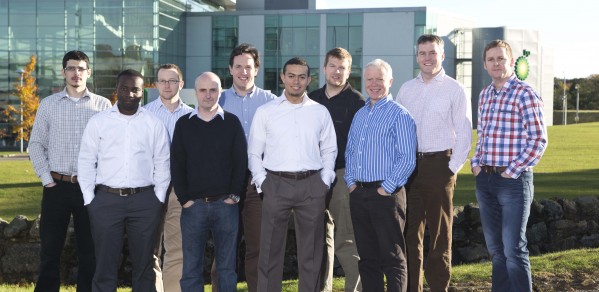
Alumnus, Mohamed Mashaal, lead Engineer at BP, was part of a team who, following three failed attempts, successfully managed to drill an extended reach well from the Harding Platform in the North Sea.
When a rig costs around £150,000 per day, a few weeks lost due to problems can easily cost millions of pounds, with no guarantee of achieving the objective
Alumnus, Mohamed Mashaal, Lead Drilling Engineer, BP
As one of BP’s top 40 wells globally (and the only UK well qualifying for that category in 2012), the successful delivery of the Harding field’s ‘Producer North East 2a’ well (referred to as PNE2a) was crucial to the business. Three previous attempts had been made to drill an extended reach well from the Harding Platform, in the centre of the field, to hydrocarbon-rich reservoir targets several kilometres away, but all ended without success. Mohamed was the operational drilling engineer during the execution of the third attempt in 2011, when the well reached 15,248ft measured depth before suffering formation fracture and total losses of the drilling fluid.
Using a technology that was relatively new to BP’s North Sea operations, Mohamed and the rest of the Harding drilling engineering team redesigned the well to be delivered using an innovative Managed Pressure Drilling (MPD) method. This allowed the use of a lighter density drilling fluid, thus reducing the risk of formation fracture of the sandstone reservoir and subsequent losses, but compensated by applying a varying surface back-pressure (SBP) to maintain a constant bottom-hole pressure sufficient to prevent collapse of very unstable shale mudstones. The system consisted of a rubber sealing element fitted around the drill pipe, software-controlled automatic chokes, and an auxiliary pump – all of these combine to apply SBP as required.
After six months of intensive planning work, the offshore team executed the PNE2a well, overcoming many challenges along the way, from getting the 12-1/4” drilling assembly stuck and having to spend over a week patiently working it free, to suffering over 10 days of non-productive time due to MPD equipment failure – fortunately the team had appropriate back-up and contingency plans which were prepared in advance. “When a rig costs around £150,000 per day, a few weeks lost due to problems can easily cost millions of pounds, with no guarantee of achieving the objective,” recalls Mohamed.
Fortunately, the well did deliver a successful outcome, securing over 400ft of high quality sandstone and producing over 4000bbls (gallons to barrels) of oil per day when initially brought online. The success was not just confined to the PNE2a well, but by demonstrating the successful implementation of MPD to deliver what could not be achieved conventionally, the future exploitation of the remaining field reserves would now be possible. It is no wonder why Taqa Bratani purchased the field from BP in 2013.
Mohamed was elected a Member of the Institution of Mechanical Engineers as a Chartered Engineer (IMECHE) in 2012. He now mentors two developing engineers at BP towards Chartership with IMECHE, an initiative fully supported by BP. “I find it thoroughly rewarding to be able to help the next generation of engineers to develop their professional skills and qualifications, and they may not believe it, but I learn more from them than they do from me.”
BP Drilling Engineer Mohamed Mashaal has presented at the Society of Petroleum Engineers’ 2013 Annual Technical Conference as co-author of a paper on the successful implementation of Managed Pressure Drilling, and in May 2014 an article summarising the work was published in the Journal of Petroleum Technology. The paper can be downloaded below.
He has recently been assigned as Lead Drilling Engineer for the Quad 204 project since July 2014.
Mohamed was a student of Corpus Christi College and graduated from Cambridge University with a degree in Mechanical Engineering in 2007.

